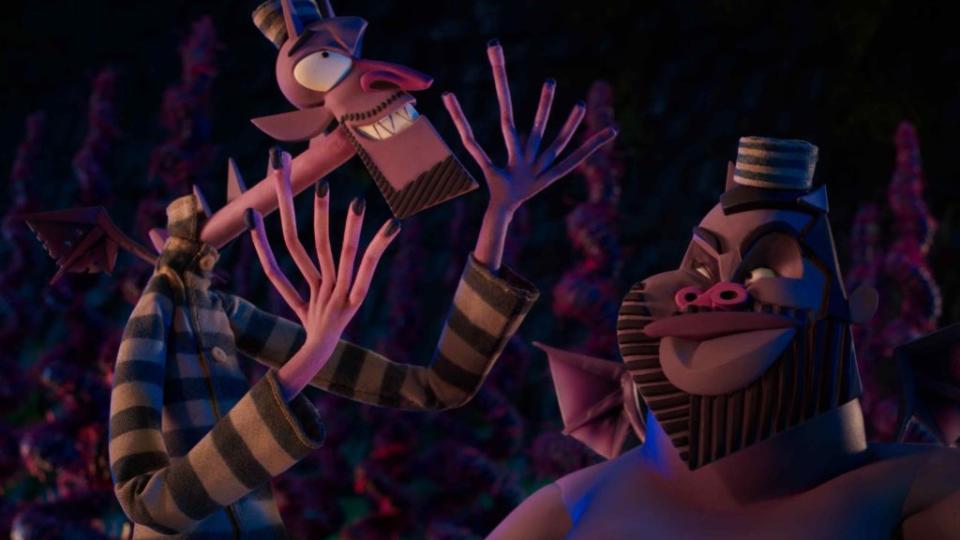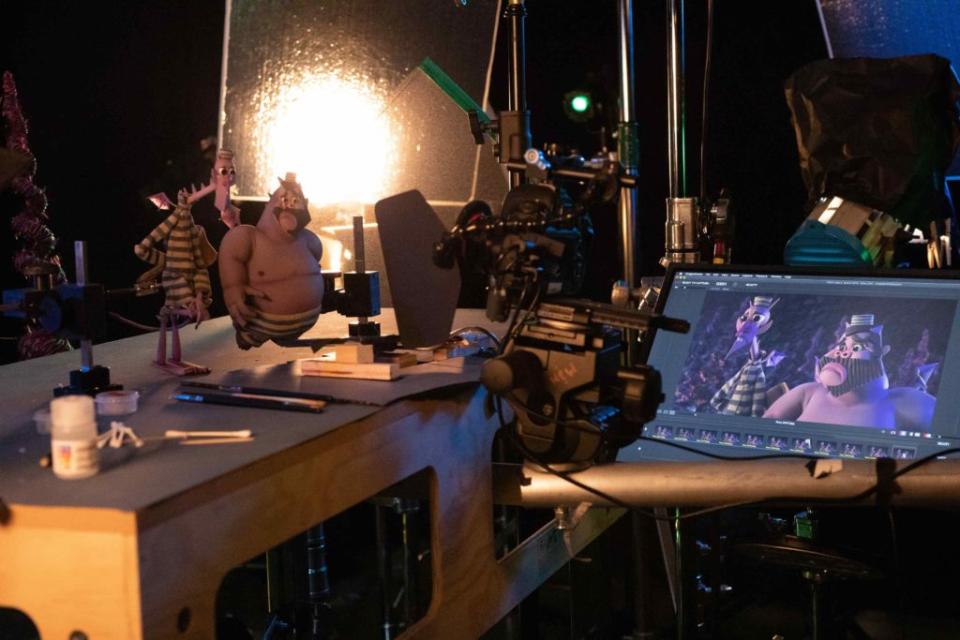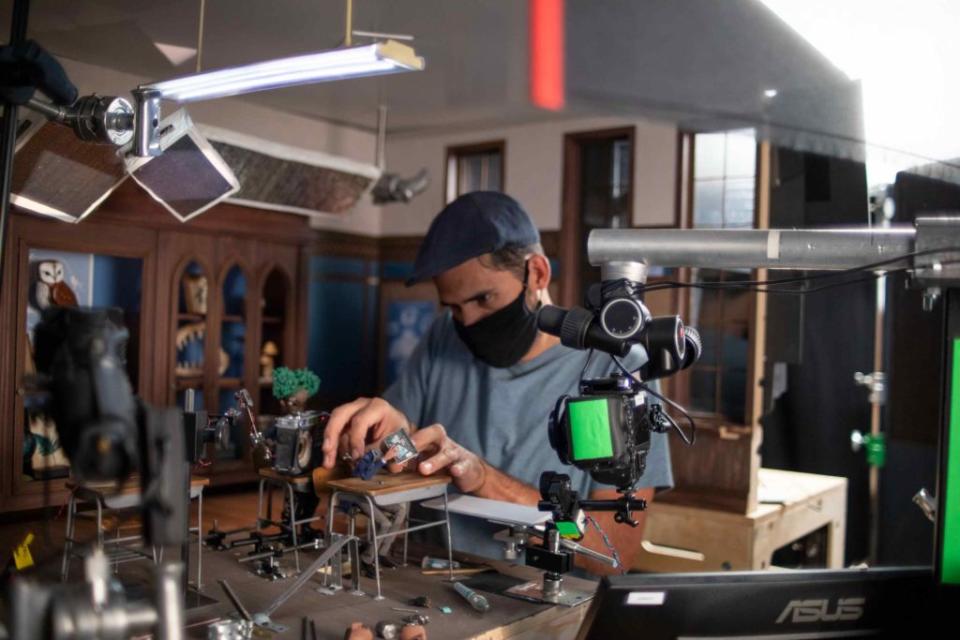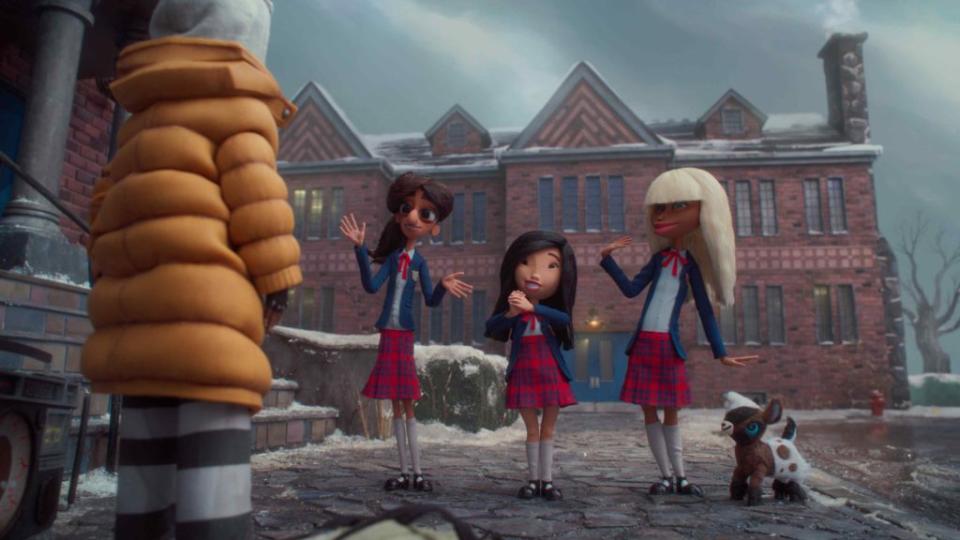Inside The Wacky, Wondrous World Of Netflix's 'Wendell & Wild,' The Reteaming Of Jordan Peele And Keegan-Michael Key

- Oops!Something went wrong.Please try again later.
- Oops!Something went wrong.Please try again later.
- Oops!Something went wrong.Please try again later.
- Oops!Something went wrong.Please try again later.
As technology has expanded, the use of computer-generated imagery (CGI) and other special effects to bring narratives to life has become commonplace in cinema. Stop-motion animation, which requires a film crew to work in absolute harmony and for a movie to be captured frame by frame, is, in some ways, a lost art. However, for The Nightmare Before Christmas director Henry Selick, it is still the most delectable way to tell a story. A master at his craft, the Academy Award nominee has teamed up with Academy Award winner Jordan Peele for his latest wickedly delightful project, Netflix‘s Wendell & Wild.

The film follows scheming demon brothers Wendell (Keegan-Michael Key) and Wild (Peele), who are inadvertently summoned to the Land of the Living by an angsty 13-year-old named Kat Elliot (This Is Us’ Lyric Ross). Together, the trio embarks on a twisty adventure that bends the line between life and death.
The Wendell & Wild cast includes Angela Bassett, James Hong, Tamara Smart, Natalie Martinez, Tantoo Cardinal, Igal Naor, Gary Gatewood, Gabrielle Dennis, David Harewood, Maxine Peake, Ramona Young, Sam Zelaya, Seema Virdi and Ving Rhames.
Last spring, as the film’s final frames were being captured, Shadow and Act went to Portland, Oregon, to the Wendell & Wild set. During our visit, we had an in-depth discussion with Selick, got up close and personal with the hundreds of puppets used in the film, and chatted with the project’s various teams, including arts, animation, rigging, wardrobe, and paint. They all worked tirelessly to put this magical creation together.

“Wendell & Wild started out as a short story I did many years ago inspired by my sons who are now grown,” Selick explained. “When they were little, I did a picture of them as demons because they were somewhat demonic at times. And I wrote a little short about it and shared it with some people — but put it away.”
Selick hadn’t thought about his drawing until he reached out to Jordan Peele many years later, hoping to work together in some capacity. “He was just starting up his company, Monkeypaw,” the director explained. “And that’s the genesis of the project. I reached out to a great artist, Pablo Lobato, an Argentinian known for his fantastic caricatures that aren’t silly. I wanted the Wendell and Wild demons to look a bit like Key and Peele. And so, we put together the basis of the story.”
Peele worked with Selick to begin crafting the characters in the story, and then Get Out debuted to rave reviews, throwing open the door for anything else birthed out of Monkeypaw. Still, because Wendell & Wild uses stop-motion animation, it took some real convincing to get the film made. “It’s always been the stepchild of the animation industry,” the James and the Giant Peach director explained.
Thankfully, Selick and Peele got Netflix on board. The studio has always championed animation. However, making the film was still going to be quite a task. “There are new materials, new types of silicons to make the skin of puppets and so forth,” the Coraline director said. “But we’re really relying mainly on old-fashioned technology. And at the center of it all, it’s humans performing through the puppets in a straight-ahead performance.”

Since stop-motion animation is such an intense and painstakingly slow process, some real trust and teamwork were required to ensure that all the various teams worked together seamlessly. Getting the puppets and sets to come alive was one thing, but then matching the puppets’ speech with the actors’ voices was something else entirely. “They’ll often videotape the actor when they do [voiceover], Kyle Williams, the replacement animation design lead, explained. “Then you’re using those 120 shapes to make a lip sync across the entire read. It’s not always linear; sometimes, you just hold this frame for three seconds or three frames and then move it into this next dialogue. And then the animator will have that line of dialogue on his screen so they can perform to it. Then everything at the end syncs up.”
In addition to the hurdle of stop-motion animation, just as the film’s production got underway, the world was struck by the coronavirus (COVID-19) pandemic, and everything came to a screeching halt, including Wendell & Wild. “It definitely added a year, a year and a half to the schedule, and money,” Selick. “So creatively, there were some adjustments when we set up our movie, and then the animation executives were hired after that.”
Amid shutdown, some forest fires near set prompted a major puppet rescue in case the studio was burned down. Still, despite all of the setbacks, Selick says that Netflix supported the movie steadfastly.

For those intent on getting on this wacky wild ride, Selick says several themes stand out in Wendell & Wild. “I’m not going to put these in order of importance because they all play off each other,” he explained. “One is ‘Don’t judge things by the cover.’ What’s truly evil? Who are the villains in this film? And it’s not who you might expect them to be. It’s about resilience. It’s about finding a way out from that shell of anger and shining a light. It’s also, ‘Be careful what you wish for.’ The thing you absolutely believe will make you happy, and everything will be happily ever after when you get it — it never works out that way.”
Wendell & Wild will debut on Netflix on October 28.
Aramide A. Tinubu is a film critic, consultant and entertainment editor. As a journalist, her work has been published in Netflix’s Tudum, EBONY, JET, ESSENCE, Bustle, The Daily Mail, IndieWire and Blavity. She wrote her master’s thesis on Black Girlhood and Parental Loss in Contemporary Black American Cinema. She’s a cinephile, bookworm, blogger and NYU + Columbia University alum.

